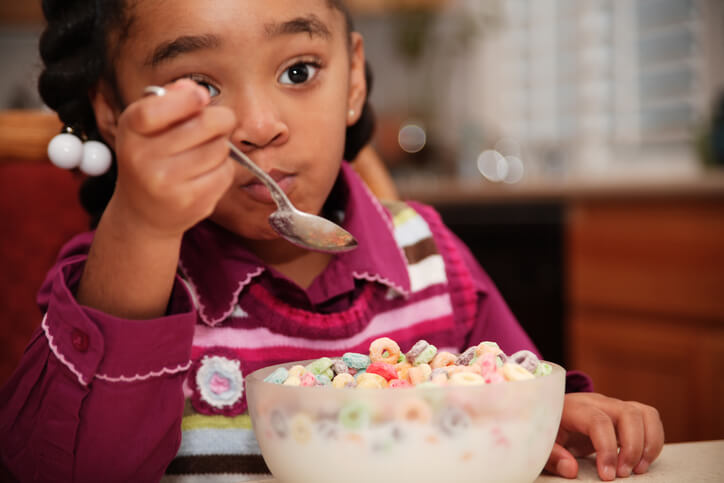
A Case for Unlimited Cinnamon Toast Crunch
Several months ago, my son came home raving about Cinnamon Toast Crunch. He’d had it for the first time at a friend’s house and loved it. What kid (or
adult) doesn’t? It’s delicious. I didn’t think much of it but he kept mentioning it and asking me to buy it. Up until this point, he’d been perfectly
satisfied with Cheerios or eggs and toast for breakfast. The part of me who went to school for nutrition for 6 years was satisfied with those
choices too. The part of me who’s spent fifteen years working with eating disorders and understands the psychology of eating behavior, knew what I
had to do.
I went out and bought 2 boxes of Cinnamon Toast Crunch. That night, I placed a box on the dinner table (I often place a box of cereal and milk on the table
when serving a new dish or something I know the kids don’t like). My son sees the box and immediately screams “you got Cinnamon Toast Crunch!” and
runs over to give me a hug and says “I love you”. While I was certainly thrilled to get a hug and hear this, I also cringed knowing that this felt
like something really special to him. I said, “I know you love Cinnamon Toast Crunch so I added it to our menu tonight. You can have as much as you
want. We have two full boxes”.
He ate 3 bowls of Cinnamon Toast Crunch at dinner and had it again for breakfast the next day… and every day thereafter for 2 weeks. I was buying a couple
boxes a week for a good stretch of time. Then, it hit me today, this box has been sitting here for a month. I continue to offer it every morning and
now it gets equal play time with what are commonly thought of as nutritionally desirable choices. In fact, I’ve had to replace the Cheerios twice since
opening this box of Cinnamon Toast Crunch. Was I counting on this happening? Not at all. Am I feeling a little self-satisfied that my experiment in
eating behavior panned out? Yes. However, I would be absolutely fine if he opted for Cinnamon Toast Crunch every day if that’s what he preferred.
Most kids are drawn to novel foods, especially those that appeal to their natural preference for sweetness. Once something isn’t novel, it loses appeal.
Neutralizing messages around food allows kids to explore food more organically and to learn to listen to their bodies. When we avoid classifying foods
as “good” or “bad”, no foods feel taboo. This lessens the likelihood that any food will hold too much energy. It also means a child won’t be raiding
friends’ cabinets or bingeing on the coveted foods when present.
It’s easy to let the diet culture we’ve all been raised in translate to our kids. We are immersed in it to the point it feels like the norm. I’ve even
heard food dichotomized as “medicine” or “poison”. C’mon people, it’s just food! It provides fuel to our bodies and it is intended to be pleasurable.
Our bodies are beautifully designed to take care of themselves, including process the food we eat. If we listen to our bodies instead of external
messages about food, we can find what foods satisfy and energize us.
Diet culture leads us to believe we can’t trust our bodies around food… or let our children trust theirs. The reality is, dieting takes away our ability
to self-regulate by teaching us to override our hunger cues. Kids are born knowing how to eat. If we provide the structure and regular access to a
variety of foods (including junk food), they will self-regulate.
If you want to learn more about how you can encourage your child to become a competent eater, I recommend the following books:
Child of Mine: Feeding With Love and Good Sense by Ellyn Satter



